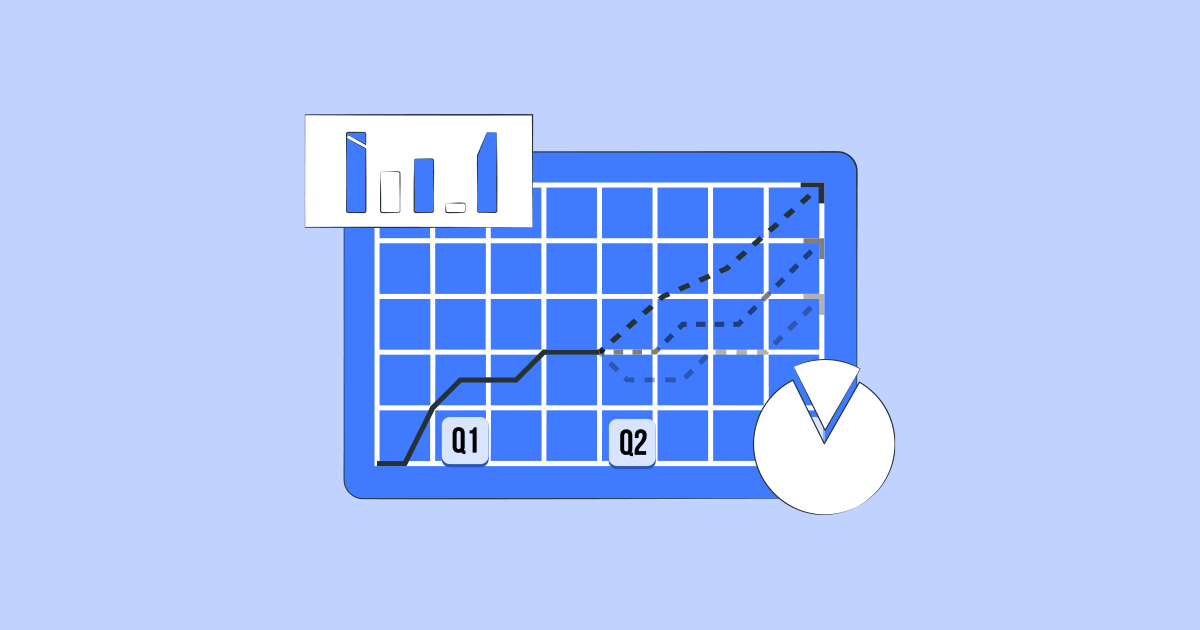Residential Proxies
Allowlisted 200M+ IPs from real ISP. Managed/obtained proxies via dashboard.

Proxies Services
Residential Proxies
Allowlisted 200M+ IPs from real ISP. Managed/obtained proxies via dashboard.
Residential (Socks5) Proxies
Over 200 million real IPs in 190+ locations,
Unlimited Residential Proxies
Unlimited use of IP and Traffic, AI Intelligent Rotating Residential Proxies
Static Residential proxies
Long-lasting dedicated proxy, non-rotating residential proxy
Dedicated Datacenter Proxies
Use stable, fast, and furious 700K+ datacenter IPs worldwide.
Mobile Proxies
Dive into a 10M+ ethically-sourced mobile lP pool with 160+ locations and 700+ ASNs.
Scrapers
Collection of public structured data from all websites
Proxies
Residential Proxies
Allowlisted 200M+ IPs from real ISP. Managed/obtained proxies via dashboard.
Starts from
$0.6/ GB
Residential (Socks5) Proxies
Over 200 million real IPs in 190+ locations,
Starts from
$0.03/ IP
Unlimited Residential Proxies
Unlimited use of IP and Traffic, AI Intelligent Rotating Residential Proxies
Starts from
$1816/ MONTH
Rotating ISP Proxies
ABCProxy's Rotating ISP Proxies guarantee long session time.
Starts from
$0.4/ GB
Static Residential proxies
Long-lasting dedicated proxy, non-rotating residential proxy
Starts from
$4.5/MONTH
Dedicated Datacenter Proxies
Use stable, fast, and furious 700K+ datacenter IPs worldwide.
Starts from
$4.5/MONTH
Mobile Proxies
Allowlisted 200M+ IPs from real ISP. Managed/obtained proxies via dashboard.
Starts from
$1.2/ GB
Scrapers
Web Unblocker
Simulate real user behavior to over-come anti-bot detection
Starts from
$1.2/GB
Serp API
Get real-time search engine data With SERP API
Starts from
$0.3/1K results
Scraping Browser
Scale scraping browsers with built-inunblocking and hosting
Starts from
$2.5/GB
Documentation
All features, parameters, and integration details, backed by code samples in every coding language.
TOOLS
Resources
Addons
ABCProxy Extension for Chrome
Free Chrome proxy manager extension that works with any proxy provider.
ABCProxy Extension for Firefox
Free Firefox proxy manager extension that works with any proxy provider.
Proxy Manager
Manage all proxies using APM interface
Proxy Checker
Free online proxy checker analyzing health, type, and country.
Proxies
AI Developmen
Acquire large-scale multimodal web data for machine learning
Sales & E-commerce
Collect pricing data on every product acrossthe web to get and maintain a competitive advantage
Threat Intelligence
Get real-time data and access multiple geo-locations around the world.
Copyright Infringement Monitoring
Find and gather all the evidence to stop copyright infringements.
Social Media for Marketing
Dominate your industry space on social media with smarter campaigns, anticipate the next big trends
Travel Fare Aggregation
Get real-time data and access multiple geo-locations around the world.
By Use Case
English
繁體中文
Русский
Indonesia
Português
Español
بالعربية

In the realm of web development and server communication, mastering HTTP requests is essential for developers seeking to interact with web services and APIs effectively. Among the plethora of tools available for making HTTP requests, cURL stands out as a powerful and versatile command-line tool trusted by developers worldwide. In this blog post, we'll delve into the intricacies of cURL's GET syntax, exploring how to harness its capabilities to fetch data from web servers effortlessly.
cURL, short for "Client URL," is a command-line tool and library for transferring data with URLs. It supports various protocols, including HTTP, HTTPS, FTP, and more, making it a versatile choice for interacting with web services and APIs. With cURL, developers can perform a wide range of tasks, such as sending and receiving HTTP requests, downloading files, and testing APIs, all from the command line.
In the context of web development, HTTP requests come in different types, each serving a specific purpose. GET requests, in particular, are used to retrieve data from a specified resource on the web server. Unlike POST requests, which are used to submit data to be processed by the server, GET requests simply request data from the server without modifying it.
Syntax of cURL GET Requests
cURL's syntax for making GET requests is straightforward and intuitive. Here's a breakdown of the basic syntax:
curl [options] [URL]
In this syntax:
curl is the command-line tool used to invoke cURL.[options] refer to any additional options or flags that modify the behavior of the request. These options can include specifying headers, setting request methods, and more.[URL] is the URL of the resource you want to retrieve data from. This can be a web page, API endpoint, or any other accessible resource on the web server.Let's look at an example of how to use cURL to make a GET request to fetch data from a web server:
curl https://api.example.com/data
In this example, cURL sends a GET request to https://api.example.com/data, requesting data from the specified endpoint.
While the basic syntax of cURL GET requests is simple, developers can leverage a variety of options to customize and enhance their requests. Some common options include:
-H, --header: Specify custom headers to include in the request.-X, --request: Set the HTTP request method (e.g., GET, POST, PUT, DELETE).-o, --output: Write output to a file instead of stdout.-v, --verbose: Print verbose output, including request and response headers.By mastering the syntax of cURL GET requests and familiarizing yourself with its various options, you can harness the full power of this versatile command-line tool in your web development projects. Whether you're fetching data from APIs, testing endpoints, or troubleshooting network issues, cURL provides a robust and efficient solution for interacting with web servers from the command line. So, roll up your sleeves, dive into the world of cURL, and elevate your HTTP request game to new heights.
Featured Posts
Popular Products
Residential Proxies
Allowlisted 200M+ IPs from real ISP. Managed/obtained proxies via dashboard.
Residential (Socks5) Proxies
Over 200 million real IPs in 190+ locations,
Unlimited Residential Proxies
Use stable, fast, and furious 700K+ datacenter IPs worldwide.
Rotating ISP Proxies
ABCProxy's Rotating ISP Proxies guarantee long session time.
Residential (Socks5) Proxies
Long-lasting dedicated proxy, non-rotating residential proxy
Dedicated Datacenter Proxies
Use stable, fast, and furious 700K+ datacenter IPs worldwide.
Web Unblocker
View content as a real user with the help of ABC proxy's dynamic fingerprinting technology.
Related articles

Mastering the Art of HTTP Requests: Understanding cURL GET Syntax
Title: Mastering the Syntax of Curl GET RequestsWhen it comes to making HTTP requests, the Curl command-line tool is an invaluable resource for developers. One of the most common types of requests is the GET request, which retrieves data from a specified URL. Understanding the syntax of a Curl GET request is essential for effectively interacting with web servers.To initiate a Curl GET request, the syntax typically involves using the command 'curl' followed by the URL you wish to retrieve data from. Additional options can be included to customize the request, such as specifying headers, setting timeouts, or following redirects.By mastering the syntax of Curl GET requests, developers can efficiently retrieve data from web servers, troubleshoot issues, and integrate API calls into their applications. This knowledge is crucial for anyone working with web services or building web applications that rely on external data sources.In conclusion, a solid understanding of the syntax of Curl GET r

"The Benefits of Using an iPhone Proxy Server for Enhanced Online Security and Privacy"
The growing popularity of iPhones and the increasing demand for online privacy have led to the rise of iPhone proxies. An iPhone proxy is a tool that allows users to mask their IP addresses and securely browse the internet on their iPhones. This blog post explores the benefits of using an iPhone proxy, such as accessing blocked websites, enhancing online security, and maintaining anonymity while using public Wi-Fi networks. Additionally, it discusses the different types of iPhone proxies available, and provides a step-by-step guide on how to set up and use an iPhone proxy effectively. With the ever-increasing threats to online privacy, using an iPhone proxy has become a crucial tool for iPhone users to protect their sensitive information and enjoy a safe and unrestricted online experience.

"Unlocking the Web: Discover the Power of Unblocked Proxies"
Are you tired of being restricted from accessing certain websites or content? Look no further than unblocked proxy services. An unblocked proxy is a tool that allows you to bypass censorship and access blocked websites anonymously. Whether you are at work, school, or in a country with heavy internet restrictions, an unblocked proxy can grant you the freedom to browse the internet without limitations.Unblocked proxy services work by acting as a middleman between your device and the blocked website. When you try to access a blocked site, your request is first sent to the proxy server, which then accesses the site on your behalf and sends the content back to you. This process effectively hides your real IP address and location, making it difficult for the website or network administrator to track your online activities.One of the main advantages of using an unblocked proxy is the ability to bypass regional restrictions. For example, if you are outside of the United States and want to acce